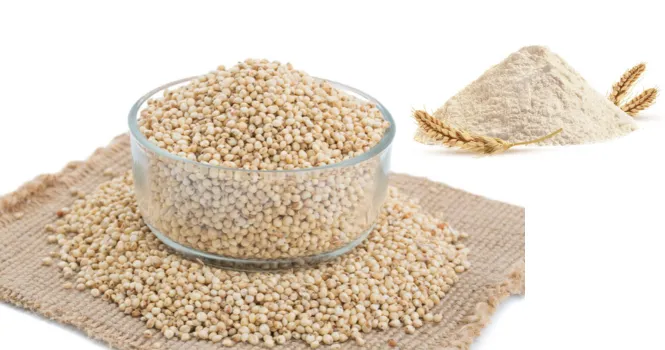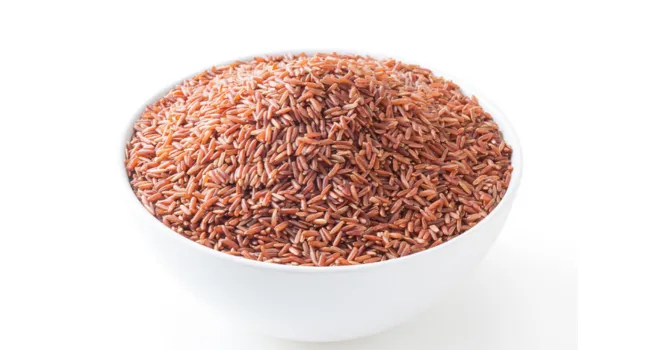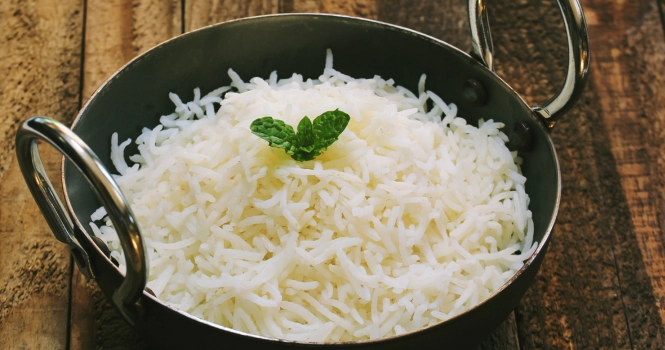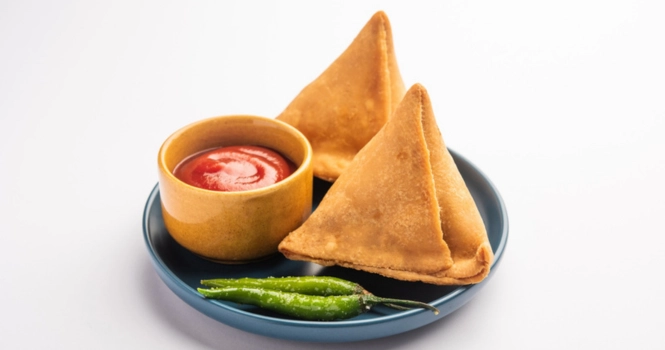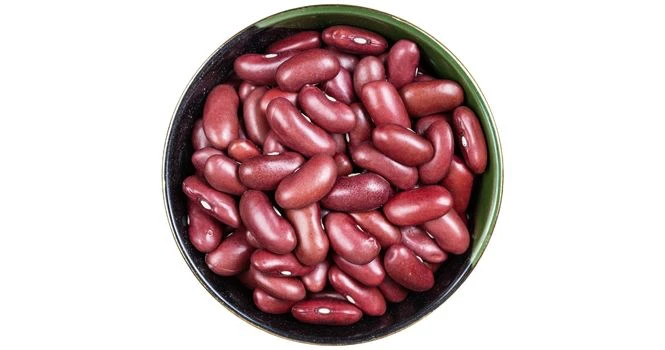Discovering Parmal Rice: Characteristics and Uses
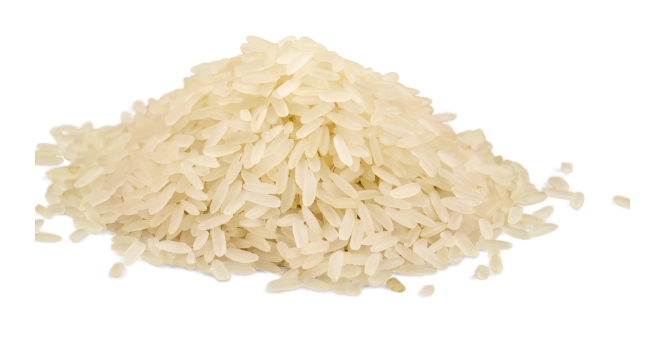
What is Parmal Rice?
Parmal rice, often known as Parmal or Parmal Sella rice, is a variety of long-grain rice that is commonly grown and consumed in parts of South Asia, including India and Pakistan.
This variety of rice is known for its slender and elongated grains, which expand in length when cooked but remain non-sticky, making it a popular choice for a variety of dishes.
Parmal rice is often available in both
- White
- Parboiled (Sella) forms.
The parboiled version, known as Parmal Sella rice, involves partially boiling the rice in the husk, which can change its texture, make it firmer, and help retain more nutrients compared to the white version. This process also gives the rice a yellowish color and alters its cooking properties slightly.
This rice variety is particularly appreciated for its aroma and flavor, making it suitable for dishes that require the rice to maintain its structure and not clump together, such as biryanis, pilafs, and other flavorful rice dishes.
Its ability to absorb flavors well while remaining separate makes it a favored choice in many culinary traditions.
In terms of nutritional content, Parmal rice, like other types of rice, is primarily a source of carbohydrates, with small amounts of protein and minimal fat. The parboiled version may have slightly higher nutritional content due to the parboiling process, which can cause some of the nutrients from the husk to infuse into the grain before the husk is removed.
Is Parmal Rice Parboiled ?
Parboiling is a cooking process applied to rice (and sometimes other grains) that involves partially boiling the rice in its husk before it is dried and then milled. This process is not just a simple pre-cooking, but a treatment that alters the rice’s properties, making it distinct from raw rice in several ways:
1. Nutritional Enhancement: The parboiling process drives some of the nutrients from the bran (outer layer) into the endosperm (inner part) of the rice grain. This makes parboiled rice slightly richer in vitamins and minerals, particularly B vitamins, compared to white rice.
2. Texture Changes: Parboiled rice becomes firmer and less sticky than regular white rice when cooked. This texture is preferred in many dishes where separate, firmer grains are desired.
3. Longer Shelf Life: The parboiling process also helps in extending the shelf life of the rice because it reduces the chances of spoilage and insect damage.
4. Cooking Time: Parboiled rice may require slightly different cooking times compared to regular white rice due to its altered texture and hardness.
5. Color Change: The process can cause the rice to adopt a pale yellow or amber color, rather than the pure white of untreated rice.
As for Parmal rice, it can be either parboiled or non-parboiled. When it undergoes the parboiling process, it is referred to as “Parmal Sella Rice.”
The term “Sella” is often used in South Asian countries to denote parboiled rice. Therefore, Parmal rice is available in both forms: the traditional (non-parboiled) and the Sella (parboiled) variety, offering consumers a choice based on their culinary needs and preferences.
What are the Characteristics of Parmal rice?
Parmal rice, a variety favored in South Asian cuisine, exhibits several distinctive characteristics that make it suitable for a wide range of dishes. Here are the key features of Parmal rice:
1. Grain Size and Shape
Parmal rice is known for its long, slender grains. This characteristic shape is a defining feature, contributing to the rice’s aesthetic appeal and texture once cooked.
2. Texture
When cooked, Parmal rice grains tend to remain separate and non-sticky, a highly desirable quality for dishes that require distinct and fluffy grains, such as biryanis, pilafs, and certain rice salads.
3. Cooking Behavior
Due to its lower moisture content, especially in the case of aged Parmal rice, it can absorb significant amounts of water and flavors from spices, herbs, and cooking liquids. This absorption capability makes it excellent for flavor-rich dishes.
4. Aroma and Flavor
While Parmal rice might not have the pronounced aromatic qualities of Basmati rice, it possesses a subtle, inherent flavor that complements a variety of ingredients without overpowering them.
5. Nutritional Profile
Like other rice varieties, Parmal rice is primarily a source of carbohydrates. It also contains some protein and minimal fat, with the nutritional value slightly varying between the white and parboiled (Sella) versions. The parboiled Sella rice may retain more nutrients due to the parboiling process, which infuses some of the bran’s nutrients into the grain.
6. Versatility
Parmal rice’s non-sticky texture and ability to absorb flavors make it versatile for a wide range of culinary applications, from simple steamed rice sides to more complex mixed rice dishes.
7. Parboiled Option
Parmal rice is available in both white and parboiled forms. The parboiled (Sella) version has a slightly different texture, firmer and less sticky, and a pale yellow color due to the parboiling process.
These characteristics make Parmal rice a popular choice in South Asian and international cuisines, offering cooks and chefs a reliable option for creating a variety of rice-based dishes that showcase the grain’s texture and flavor-absorbing capabilities.
What is Parimal rice used for?
Parmal rice is commonly used in a variety of culinary applications, especially in South Asian cuisine. Its long, slender grains and non-sticky texture when cooked make it ideal for dishes where separate, fluffy grains are preferred, such as biryanis, pilafs, and certain types of fried rice. The ability of Parmal rice to absorb flavors well also makes it suitable for dishes that are rich in spices and herbs.
Is Parmal rice good for health?
Parmal rice, like other varieties of rice, can be a healthy component of a balanced diet when consumed in moderation. It primarily provides carbohydrates, which are essential for energy. The fiber content in rice, especially in whole grain or brown versions, can also contribute to digestive health, though white Parmal rice is lower in fiber due to the milling process that removes the bran.
In terms of nutritional value, parboiled Parmal rice (Sella) might retain more nutrients than its white counterpart because the parboiling process can cause some of the nutrients from the bran to infuse into the grain before the husk is removed. This can make parboiled Parmal rice a slightly healthier option, providing more B vitamins and minerals.
Parmal rice vs Basmati rice vs Sona masoori rice
| Feature | Parmal Rice | Basmati Rice | Sona Masoori Rice |
| Origin | South Asia | Indian Subcontinent, particularly India and Pakistan | South India |
| Grain Type | Long-grain | Long-grain, known for its exceptional length | Medium-grain |
| Texture | Non-sticky, separate grains when cooked | Fluffy, separate grains, slightly softer than Parmal | Light, fluffy, and slightly sticky |
| Aroma | Subtle | Strong, distinctive aromatic fragrance | Subtle, no inherent aroma |
| Flavor | Mild | Nutty, unique flavor | Mild, slightly nutty |
| Cooking Use | Biryanis, pilafs, fried rice | Biryanis, pilafs, side dishes | Daily rice dishes, steamed rice, light biryanis |
| Nutritional Value | Source of carbohydrates, low in fat, minimal fiber | Source of carbohydrates, low in fat, contains fiber (especially brown Basmati) | Source of carbohydrates, lower glycemic index than Basmati, contains fiber |
| Variants | White, parboiled (Sella) | White, brown, parboiled | White, brown |
| Glycemic Index | Moderate to high (varies with parboiled version) | Moderate to high, slightly lower for brown Basmati | Lower than Basmati and Parmal |
This table highlights the key differences in origin, grain type, texture, aroma, flavor, culinary uses, nutritional value, available variants, and glycemic index among Parmal, Basmati, and Sona Masoori rice. Each variety offers unique qualities making them suitable for specific dishes and dietary preferences.



